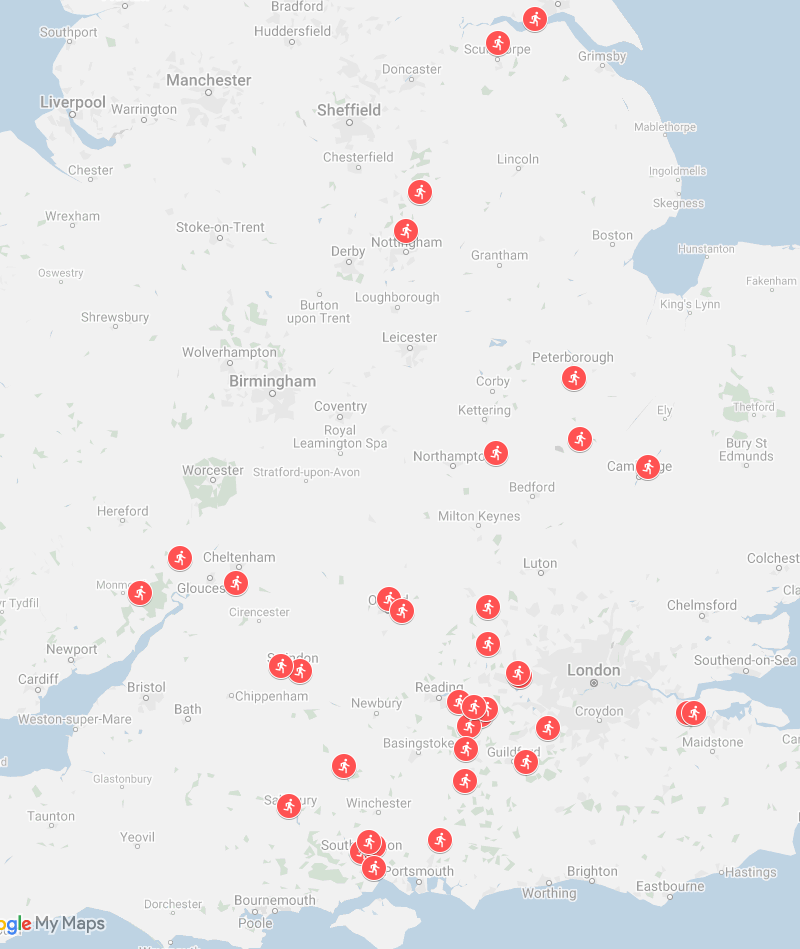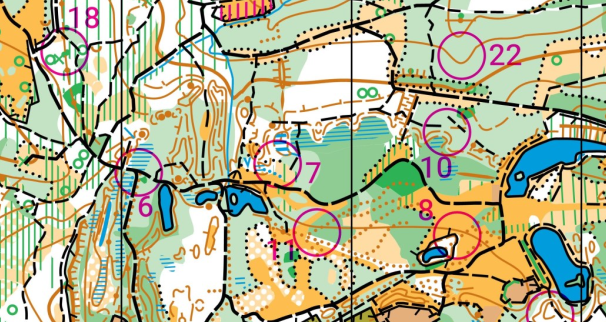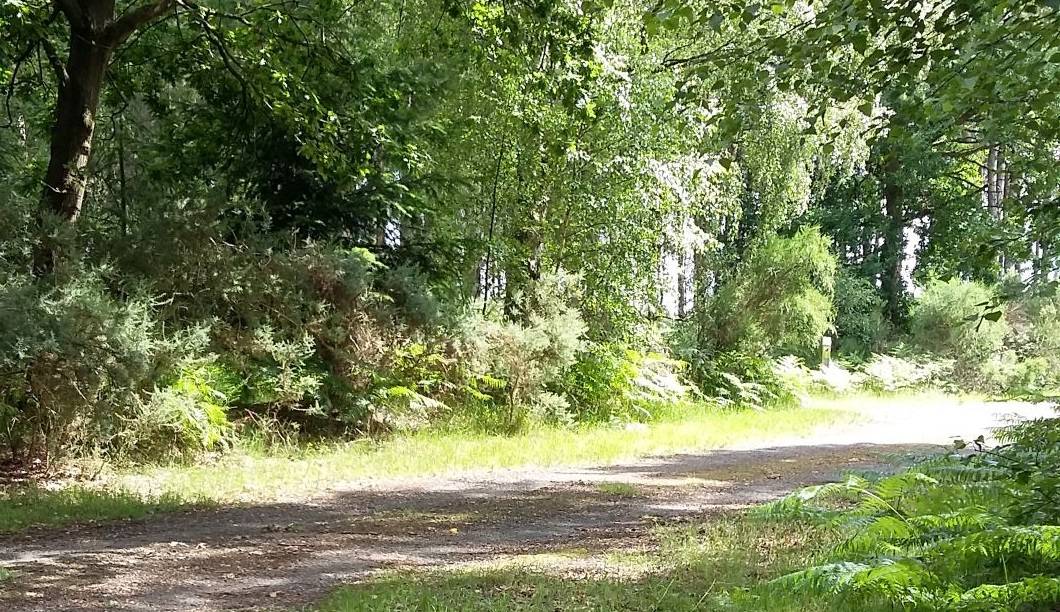Permanent Orienteering Courses are one of the first steps on the way to re-starting our sport of orienteering in a socially distanced way.
Jennie Taylor Communications Officer caught up with Stephen Borrill member of West Anglian Orienteering Club and Volunteer Permanent Orienteering Course Coordinator at his club to find out what is involved in his role and why he enjoys Permanent Orienteering Courses so much.
----
Jennie: How long have you been Permanent Orienteering Course Coordinator for your club and what does your volunteer role entail?
Stephen Borrill: "I’ve been the Permanent Orienteering Course Coordinator for West Anglian Orienteering Club (WAOC) for a couple of years now. This volunteer role entails liaising with the landowners for permissions and maintenance, people who may want to sell maps (for example in cafés) and British Orienteering to ensure the list of on the British Orienteering Permanent Orienteering Course database are up to date."
JT: How did you first discover Permanent Orienteering Courses?
Stephen: "I rediscovered orienteering in my early 30s having done it at school and found out that WAOC was my local club. I re-started orienteering tentatively, but then soon started doing some of the club's summer mid-week events, one of which used the Permanent Orienteering Courses markers at Ferry Meadows, near Peterborough. Before then, the last Permanent Orienteering Course I did was part of a school trip to Normanby Park, Scunthorpe in the mid 80s."
JT: What enticed you initially?
Stephen: "I work away a reasonable amount, so I need to find something to do in the evenings and to avoid just sitting in the pub! Permanent Orienteering Courses fit the bill perfectly. Many are score courses, so you can set your own rules. Set a time limit if you need to be back to the hotel in time for food. Pick the shortest route to do it as quickly as possible. Get the controls in numerical order if you want to challenge yourself with longer legs."
JT: How do you select which Permanent Orienteering Courses to do?
Stephen: "Mainly just proximity to where I’m working! On the other hand because I’m doing them in the evening, how easy it is to get the map is very important to me. In general I won’t be able to get to a Visitor Centre during its opening hours. Of 582 Permanent Orienteering Courses uploaded on the British Orienteering site, 289 have downloadable maps. I’m in charge of Permanent Orienteering Courses for West Anglian Orienteering Club and since the lockdown, I’ve managed to get all our landowners to agree to free map downloads. I also apply my general orienteering rule of thumb: "Don’t do an event that takes longer to drive to than it does to run it."
JT: What do you like about doing Permanent Orienteering Courses - exploring? Discovering new places? Or is it the challenge?
Stephen: "Permanent Orienteering Courses are a great way to explore new places. Like regular orienteering, you get to see places that you wouldn’t if you were just going for a walk around a country park. When you go for a walk and just wander without a map, you always feel like you’ve missed the best bits. Because you have something to actually look for when doing a Permanent Orienteering Course, it’s more rewarding/distracting, so good for doing with a family. For me, discovering new non-East Anglian countryside is fun and the terrain is often more challenging."
JT: How many Permanent Orienteering Courses have you done to date?
Stephen: "So far I’ve done 37 from the South Coast up to Humberside, from Gloucestershire across to Kent. In terms of the places where I tend to work away, I’ve done most of the nearby ones. While there are Permanent Orienteering Courses all over the country, some areas, and clubs, have many more than others. In Cambridgeshire we are in one of the most sparse areas along with neighbouring Norfolk and Lincolnshire. By comparison, near Bracknell I once did 5 courses in one evening. To be fair, all 5 only totalled 10.7km and took less than 2 hours including driving between each."
JT: Do you tick them off in a notebook? Make notes about individual Permanent Orienteering Courses you have completed?
Stephen: "I keep them on a Google map and, of course, I keep the actual maps themselves with the letters I found on the posts and any notes about missing posts, etc. I try to send feedback to the club who’s responsible if posts are missing or vandalised. So far I can remember all the Permanent Orienteering Courses I’ve done, maybe I’ll make notes when my memory starts to fail or if I do too many."

JT: Have you got a favourite Permanent Orienteering Course which particularly stands out?
Stephen: "I prefer Permanent Orienteering Courses which present a navigational challenge so are more akin to regular orienteering (of the 582 POCs, 171 say they have Green standard controls). Also, living in East Anglia, hills are always a novelty. Finally, an up-to-date map without lots of missing posts or hidden in waist-high bracken is helpful. Bearing all of these in mind, I think Shorne Woods in Kent, even though when I did it the map was very out of date, I’m pleased to see it has just been updated, Shotover Country Park near Oxford and Crickley Hill Country Park in Gloucestershire are my favourites. I have others which are memorable such as Sherwood Pines where I did 16km before giving up as it was getting dark and Oakley Park near Farnborough which was the complete opposite; a 1:2000 map that was only just over 1km in total."

JT: Are you on a mission to complete all Permanent Orienteering Courses?
Stephen: "I think I’ve quite literally got a long way to go to achieve that! I’m not like a Parkrun tourist, but on the other hand, Permanent Orienteering Courses don’t really stand up to repeat visits. Perhaps with more UK-based staycations, I’ll be able to not just do them when I’m working away."
JT: What is next for Permanent Orienteering Courses in your view?
Stephen: "I’ve been doing quite a lot of MapRun courses. These work well in urban areas or country parks with big, obvious control locations. It’s great that you get results and they’re immediate, but most are not based on proper ISOM maps. I’m developing http://maprun.uk/ as a easy way to find MapRun events along with their maps all over the country as well as offering guidance to newcomers and planners. I think both Permanent Orienteering Courses and MapRun are a great entry point into our sport and should be promoted outside of the usual orienteering channels where you already have a captive audience. The MapRun.uk site can auto-generate event pages, so could save clubs independently reinventing the wheel, but it still allows clubs to add their own details such as parking and the exact start location.
Standard Permanent Orienteering Courses still provide a more authentic orienteering experience. They have better maps, more challenging courses and something you need to physically find. Combining Permanent Orienteering Courses and MapRun is an obvious next step and it is good to see some clubs doing this. If you define your Permanent Orienteering Club markers in OpenStreetMap, Ollie O’Brien’s OpenOrienteeringMap will soon be able to import this and generate MapRun courses in a couple of clicks."

Thank you Stephen.
Permanent Orienteering Courses are available across the UK.
Find a course by following five easy steps here.
Latest News

Job Opportunity: Chief Executive Officer (CEO) - British Orienteering

Now available: A draft copy of the Rules of Orienteering effective 1/01/2025

